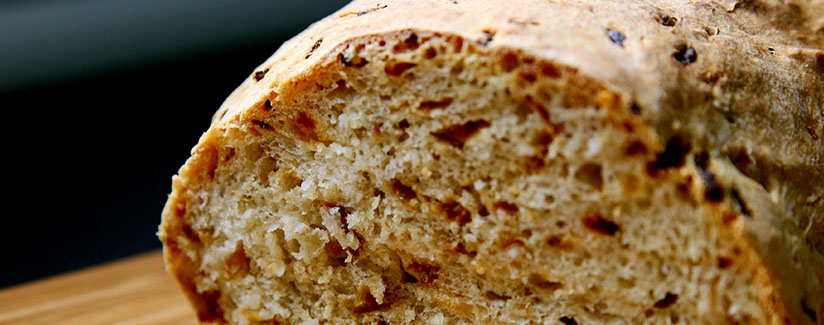
Inulin: Is This Fiber Source Too Much of a Good Thing?
10/29/2013
We received an inquiry from a reader about “functional fibers” that are being added to foods. There are reports that inulin, a popular food additive, can cause gastrointestinal discomfort if over-ingested.
We spoke with Dr. Joanne Slavin, a professor in the Department of Food Science and Nutrition at the University of Minnesota, to find out more.
Just what is inulin and how is it used?
Dr. Slavin:
Inulin is a naturally-occurring fiber that is found in many vegetables and grains as a long-chain carbohydrate that contains glucose and fructose. A few great things about inulin are:
- it provides much-needed fiber in our diets
- it increases calcium absorption
- it increases bifidobacterium, which helps ward off gastrointestinal disorders.
But, inulin is fairly fermentable and some people are more sensitive to it than others. When this fermentation takes place in the lower digestive tract, it causes gas that can create discomfort – especially if inulin is taken in large doses.
Why would somebody consume too much inulin?
Dr. Slavin:
Inulin is a very easy product to formulate. It’s valuable because it doesn’t affect the taste of food when added, and it’s a very effective way to get more fiber into food products. It can go into drinks, breakfast bars, candy or ice cream, just to name a few. Some newer products contain 9 grams of inulin, so if you’re not paying attention to the label, and were to consume three of these products in a day, that’s a pretty healthy dose of inulin. If a person is sensitive to it, they might begin to feel bloated.
Why is it such a popular food additive?
Dr. Slavin:
There are four nutrients that we tend to fall short on – calcium, fiber, potassium and Vitamin D. The average person tends to get enough of everything else. We’re trying to figure out ways to help people consume more fiber without eating more food. Some people just will not eat enough fruits and vegetables, so food companies are looking for ways to incorporate fiber into foods that people actually want to eat. Some information I’ve seen suggests inulin is the most popular supplemental fiber going into food products.
As a scientist, I hear about “stealth nutrition” – that is, people sneaking stuff that’s good for you into our food, without us knowing about it. That’s not what this is. It’s right there on the label.
If people want to monitor their inulin intake, what should they look for on the label?
Dr. Slavin:
They might just have the word “inulin” on the label, but there are other good sources for it as well. If you see “chicory root extract” on the label – that’s a good source of concentrated inulin and it sounds consumer friendly. Agave and Jerusalem Artichoke both have high levels of inulin as well. It’s up to the manufacturer to decide how they want to list it, but it depends on the source.
Do you have a question for the experts?
Click here to submit your question!
“Onion Bread” by Sonja Pieper is licensed under CC BY.


























